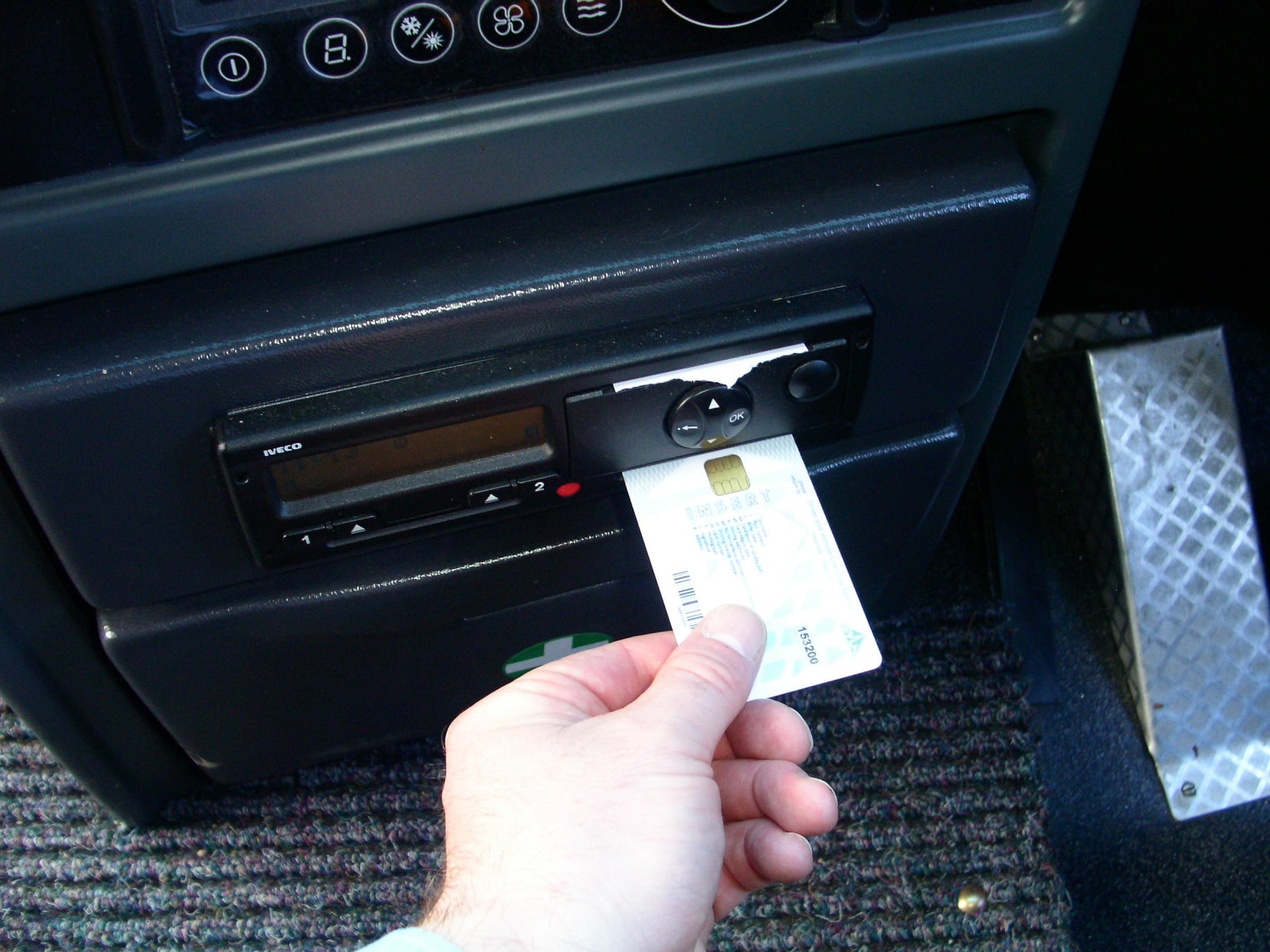Smart tachographs will be mandatory for in-scope vehicles that are registered from 15 June. Equipment manufacturers are prepared for the switch to the new units, which bring extra functionality. But what will the change mean for operators?
Not much, is the answer, and it’s the same story for drivers. Printouts will alter slightly, and there is scope for fleet management systems to harvest more information from smart tachographs. Software used for analysis and downloading will also require updating.
“Some aspects of smart tachographs are similar to the most recent types of first-generation examples,” says VDO Head of Product Management Keith Lloyd. “There should be no issues for drivers. The menu, log-in and method of making a manual entry are the same.”
Behind the scenes of smart tachographs
Changes behind the scenes with smart tachographs are more numerous. Most significant is how enforcement authorities can interrogate them remotely from the roadside.
Other alterations include the introduction of Global Navigation Satellite System (GNSS) position monitoring. Security measures have also been improved through changes to the seal.
Another part of the move to smart tachographs is a change to company, control and driver cards. Those issued now are of a second-generation version, although no specific date has been set for first-generation cards to be superseded.
There is full compatibility between second-generation cards and first-generation tachographs, and vice-versa. When two driver cards are inserted into the tachograph, they need not both be of the same generation.
Sensor changes also part of smart tachographs shift
Use of GNSS is another key part of smart tachographs. The head unit automatically records its location at the start and end of the working day and after every three hours’ driving, but the driver must still manually input the start and finish countries.
To tackle tachograph manipulation, data from the vehicle speed sensor will be compared with that from GNSS. If the difference exceeds a tolerance window, a motion conflict will be recorded.
Such a discrepancy is among data that can be downloaded when enforcement authorities ‘ping’ the head unit, something that may only be done from the roadside. The data they can access is limited. It does not include drivers’ personal information or their hours records. Additionally, it cannot be used as evidence of speeding.
“Only certain information will be downloaded. If it suggests that the tachograph is not working, is out of calibration or there is another discrepancy, DVSA can enact a traffic stop. “Remote downloading is a screening process. If no issues are discovered, data must be deleted by DVSA within three hours,” says Mr Lloyd.
But there is a cautionary aspect to any worries about this. EU member states have 15 years to provide enforcement agencies with equipment for remote downloading. DVSA has no such tools yet and is thought to have little interest in acquiring them. Italy is likely to be the first country to introduce remote downloading. Even that is expected to be some time away.
Fly in the ointment for some vehicles…
More is not straightforward with smart tachographs. One potential issue may come with vehicles that are built well before 15 June but not registered until after then. If they have been fitted with previous-generation head units, those will need to be changed for smart models. There are also possible complications where fitting a tachograph to a vehicle that currently does not have one is concerned.
Legislation mandates that in such cases, any vehicle registered after 1 May 2006 that gains a tachograph on 15 June or later must be fitted with a smart head unit. That is something to consider if you plan to retrofit a tachograph to a bus not built with one. Replacing a damaged first-generation digital tachograph is not governed so stringently. In that case, it can be replaced like-for-like.
Forward thinking required as shift is made
Smart tachographs will require replacement every 15 years. The security certification will expire at that point and they will no longer work. It’s likely that by the time that becomes due, things will have moved on, says Mr Lloyd.
“The EU is already looking at legislation for the second generation of smart tachographs. That may place more emphasis on remote downloading, including of the vehicle’s weight.”
There will no doubt be hiccups with smart tachographs, particularly related to when vehicles are towed or otherwise recovered. Then, the GNSS function will recognise movement without the odometer changing and record a discrepancy. Other than that, there is generally little for operators to worry about.
routeone comment
When Earned Recognition (ER) broke cover, concern was aired about DVSA being able to access the data of operators that signed up. When more was known, it quickly became obvious that such concerns were baseless and that only an overview would be available.
Similar worries have been flagged about smart tachographs. Again, when the facts are presented it subsequently becomes apparent that enforcement agencies will have no access to hard data via remote download. Instead, the process will act solely as an indicator that something may be amiss.
Even that is a powerful tool to use against the non-compliant. But while the intention may be good, the early implementation is set to be poor.
One of the principal reasons for smart tachographs is the ability to interrogate them remotely. But it will likely be years before doing so becomes commonplace. That’s a missed opportunity.

























